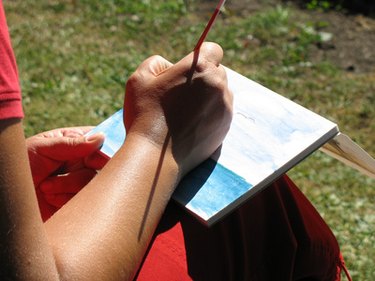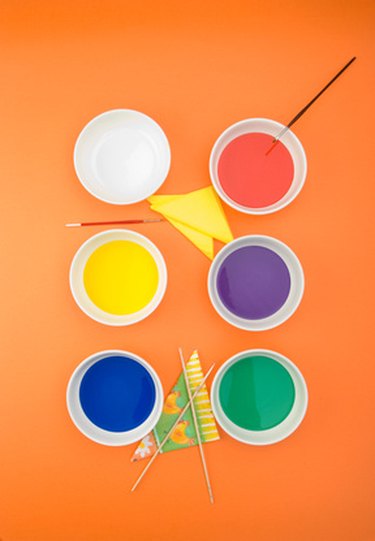
From Picasso to Rothko, painters from different traditions have striven to express their feelings through their art. While color, texture, form and line are important to the composition, emotions are often the driving force behind the creation of artwork. Not everyone can make a living depicting their moods by way of creative endeavors, but almost everyone can pick up a brush and find a new way to convey emotions.
Step 1

Remove all distractions. If possible, take your equipment to a quiet room where there are no other people, pets, TVs or computers. Removing yourself from the everyday distractions will allow you to think freely and shut out anything that might hinder your creativity.
Video of the Day
Step 2
Experiment on a sketch pad. Like athletes who warm up their bodies before intense conditioning, artists need to warm up their minds and hands in order to get focused. Also, playing with ideas early on will help you decide what you would like to create before you start actually using up the paint. Stay focused on the moment, but allow yourself to venture into new subject matter as you brainstorm.
Step 3
Find your subject. Are you trying to portray a specific situation, or a general emotion? Are you actually feeling that emotion right now, or is it more distant? If you inhabit the scenario or feeling in your mind, you will have an easier time expressing it through art. Your painting need not literally represent an object or person; developments in the art world during the last century have given rise to movements like Expressionism, which emphasizes the portrayal of feelings (through shapes and colors) over figures and scenes.
Step 4

Mix your colors. Understanding how colors express emotions will inform how you use them. Cool colors, such as purple, blue and green, are associated with calmer emotions; blue has even been shown to lower pulse rates and blood pressures in some studies. Warm colors -- red, orange and yellow -- generally represent stronger emotions. Experiment with different colors and their varied shades, and evaluate what they represent to you.
Step 5
Let the ideas flow naturally, and give yourself permission to make mistakes. Don't worry too much about form or composition as you work; getting too hung up on the small details might cause you to feel frustrated and give up. Remember that you are painting your feelings -- not trying to master the proportions of a face or perspective of a building.
Step 6
Leave the painting for a while and come back to it. You may work on something else or stop painting altogether for a while, but distancing yourself from your work will give you a fresh perspective once you return to it. Does it convey the feeling you were imagining when you painted it? Is there anything you can add to make it more evocative?
Video of the Day